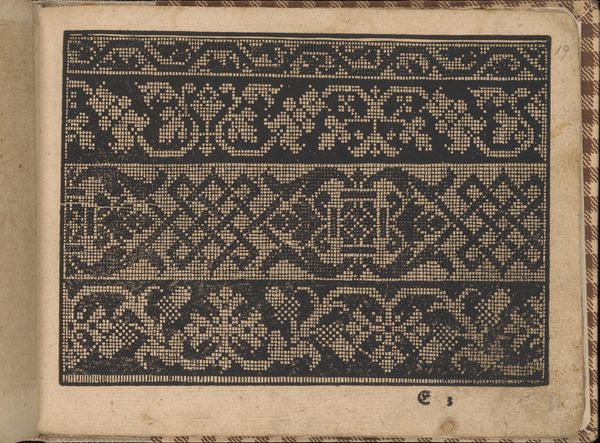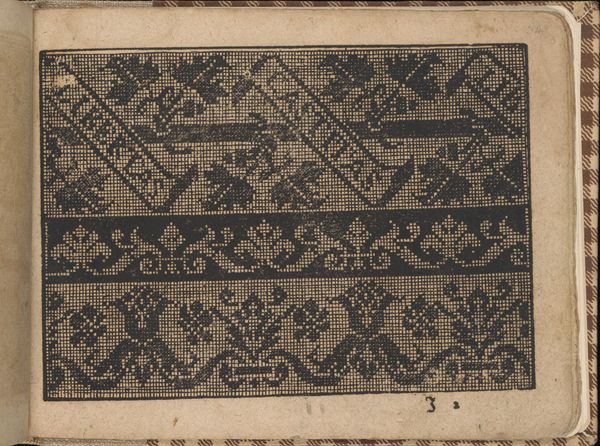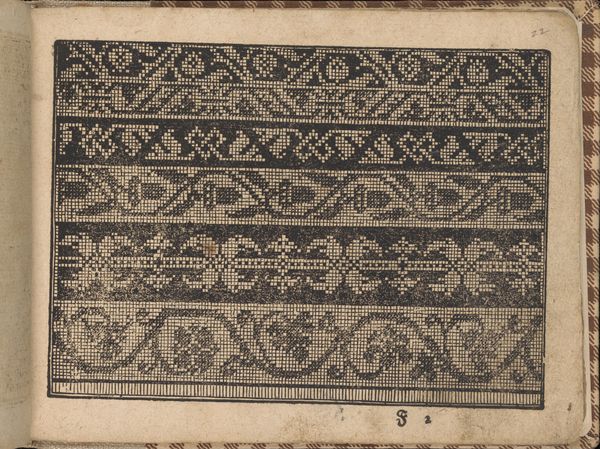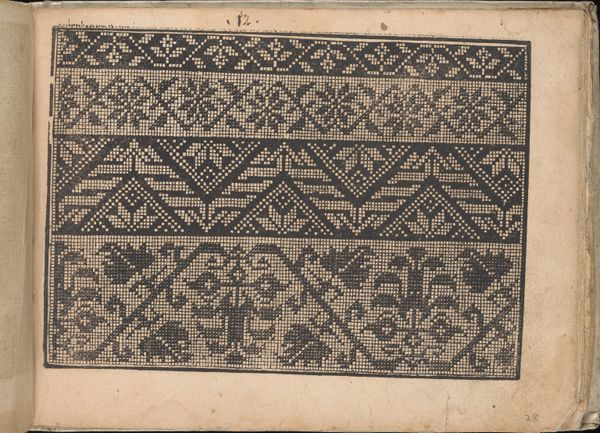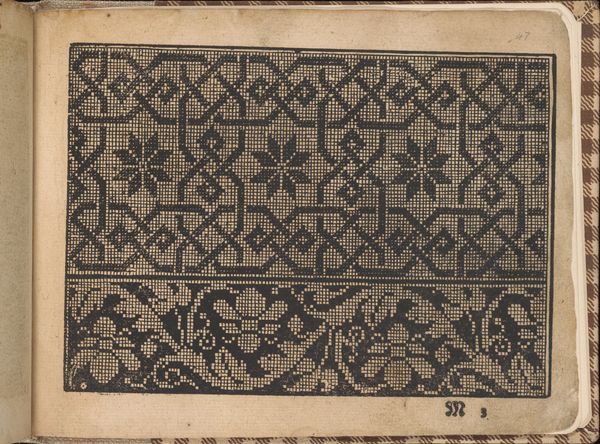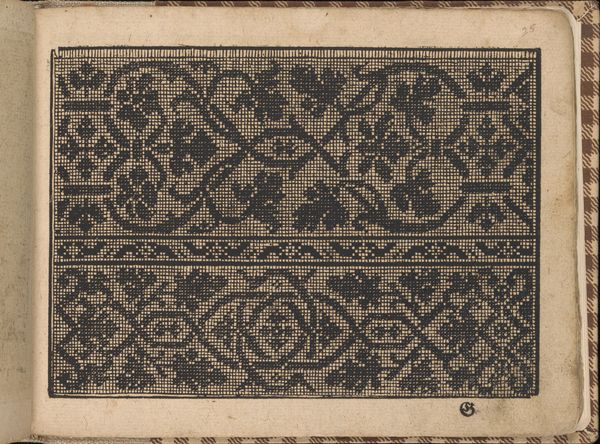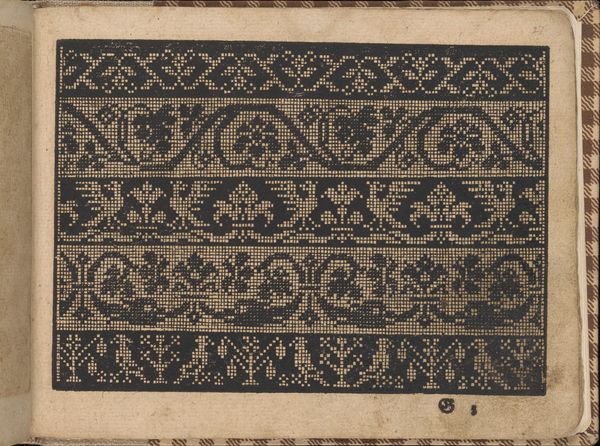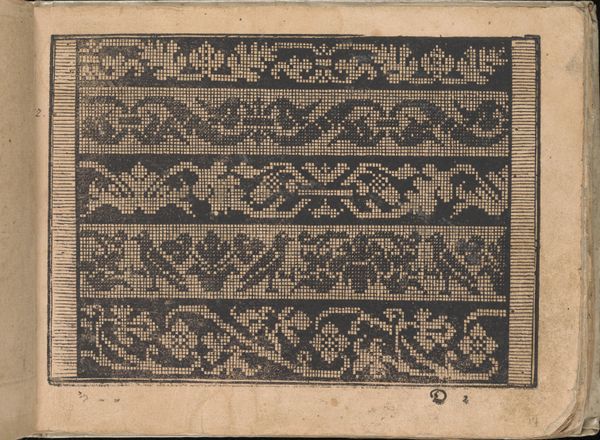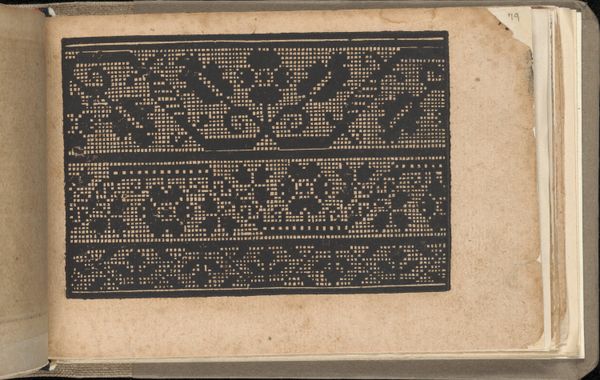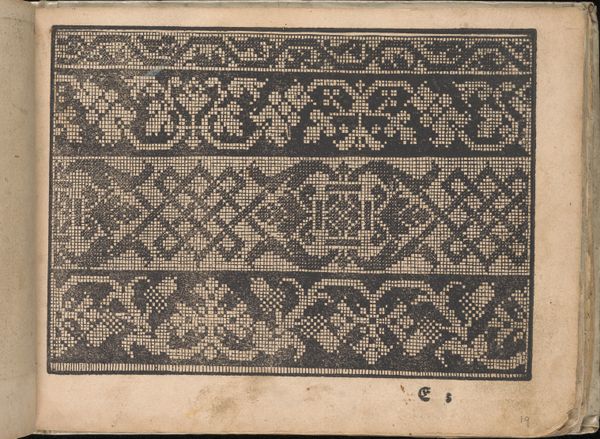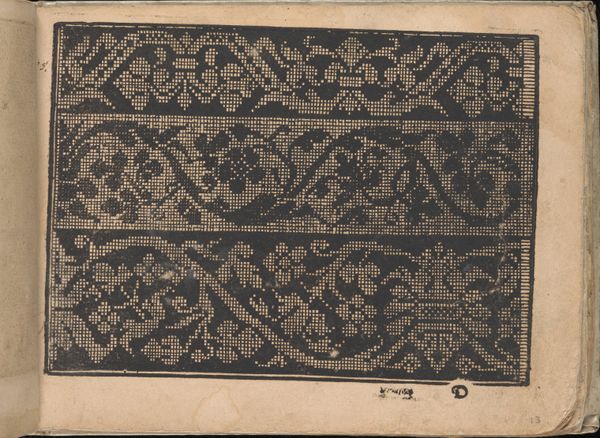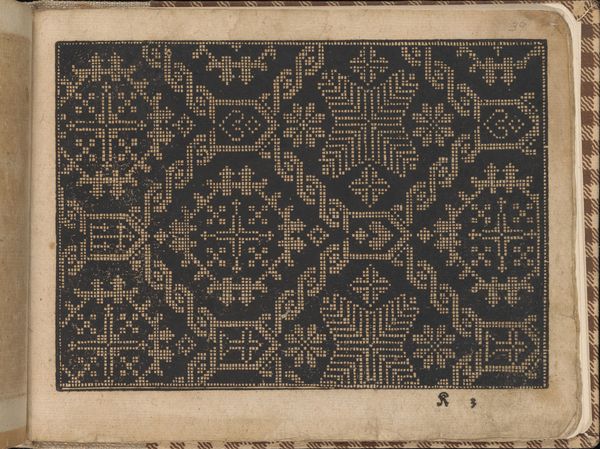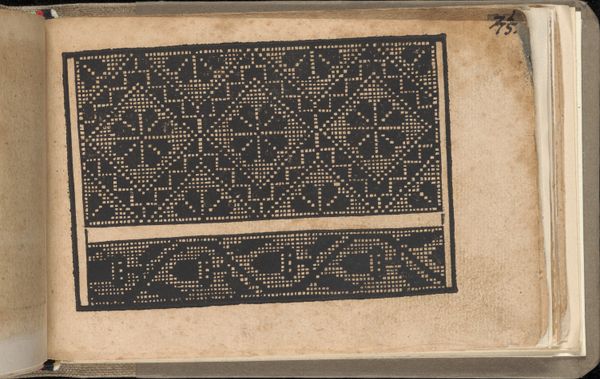
drawing, print, paper, woodcut
#
drawing
# print
#
book
#
pattern
#
flower
#
paper
#
11_renaissance
#
tile art
#
repetitive shape and pattern
#
geometric
#
woodcut
#
pattern repetition
#
northern-renaissance
#
decorative-art
Dimensions: Overall: 6 5/16 x 8 1/4 in. (16 x 21 cm)
Copyright: Public Domain
Curator: Before us we have a page, specifically page 28, from Bernhard Jobin’s "New Künstlichs Modelbuch," printed around the year 1600. It's a woodcut on paper, residing at the Metropolitan Museum of Art. Editor: It looks…intense. It's so dense with tiny patterns. It gives me a slightly dizzy feeling, like staring at an Escher print, but before Escher! It's quite hypnotic in its repetitive precision. Curator: Absolutely. These “model books” served a crucial purpose during the Renaissance. They were, in essence, pattern books – filled with designs intended for artisans to copy for embroidery, lacemaking, and other decorative arts. The geometric shapes, floral motifs, all interconnected, created a language accessible to craftspeople across Europe. Editor: It feels deeply connected to the domestic sphere. Imagining someone painstakingly recreating these patterns onto fabric, transforming something functional into a beautiful expression – it's really appealing. Were these patterns imbued with specific meanings? Curator: Often, yes. Flowers carried symbolic weight, referencing virtues, emotions, even religious ideas. The geometric patterns could denote cosmic order, societal stability, or personal aspirations. Though deciphering them all now is challenging, the repetition itself suggests an intent toward harmony and balance, ideas central to Renaissance thought. Editor: So it's not "just" pretty decoration. There’s an intentionality, a quiet philosophy woven into these lines. Looking closely, the imperfection of the woodcut is quite charming, like each print is unique, a whispered echo of the maker's hand. I think about how acts of repetition, like meditative acts, could offer spiritual transcendence. Curator: Exactly. Even within repetition, tiny variations emerged. The artist, even a copyist, could express a subtle individuality. By looking closer at "New Künstlichs Modelbuch" we start seeing the Renaissance world as a landscape of repeating patterns, both beautiful and deeply significant. Editor: Yes! Before all media moved into the digital realm and perfection could be found at the push of a button, the intention was the whole game, as it continues to be, I guess... Well, that's given me some real food for thought! Curator: Indeed. The cultural imprint, you feel it here in this single page from centuries past, the echo continues to ripple...
Comments
No comments
Be the first to comment and join the conversation on the ultimate creative platform.
